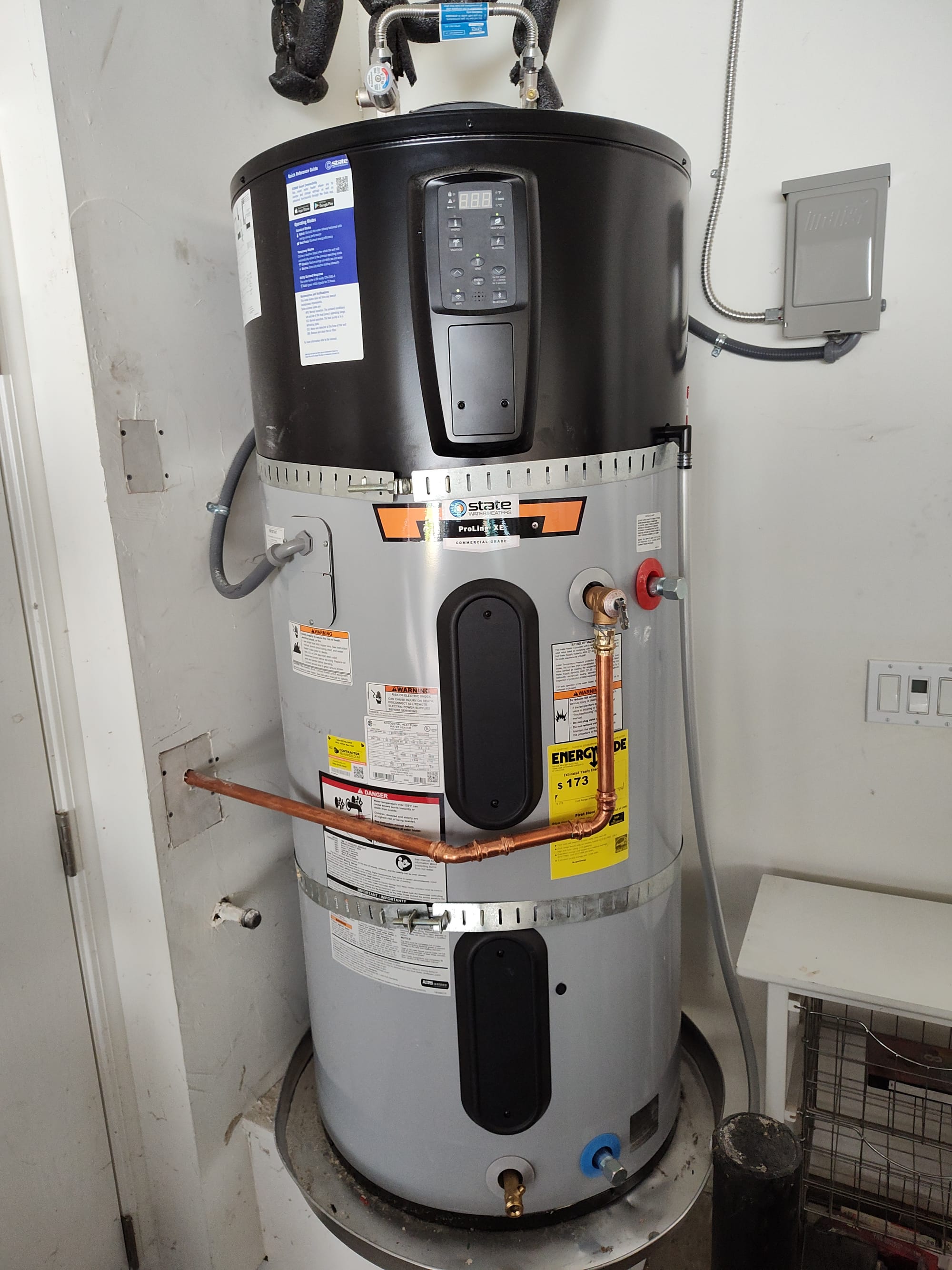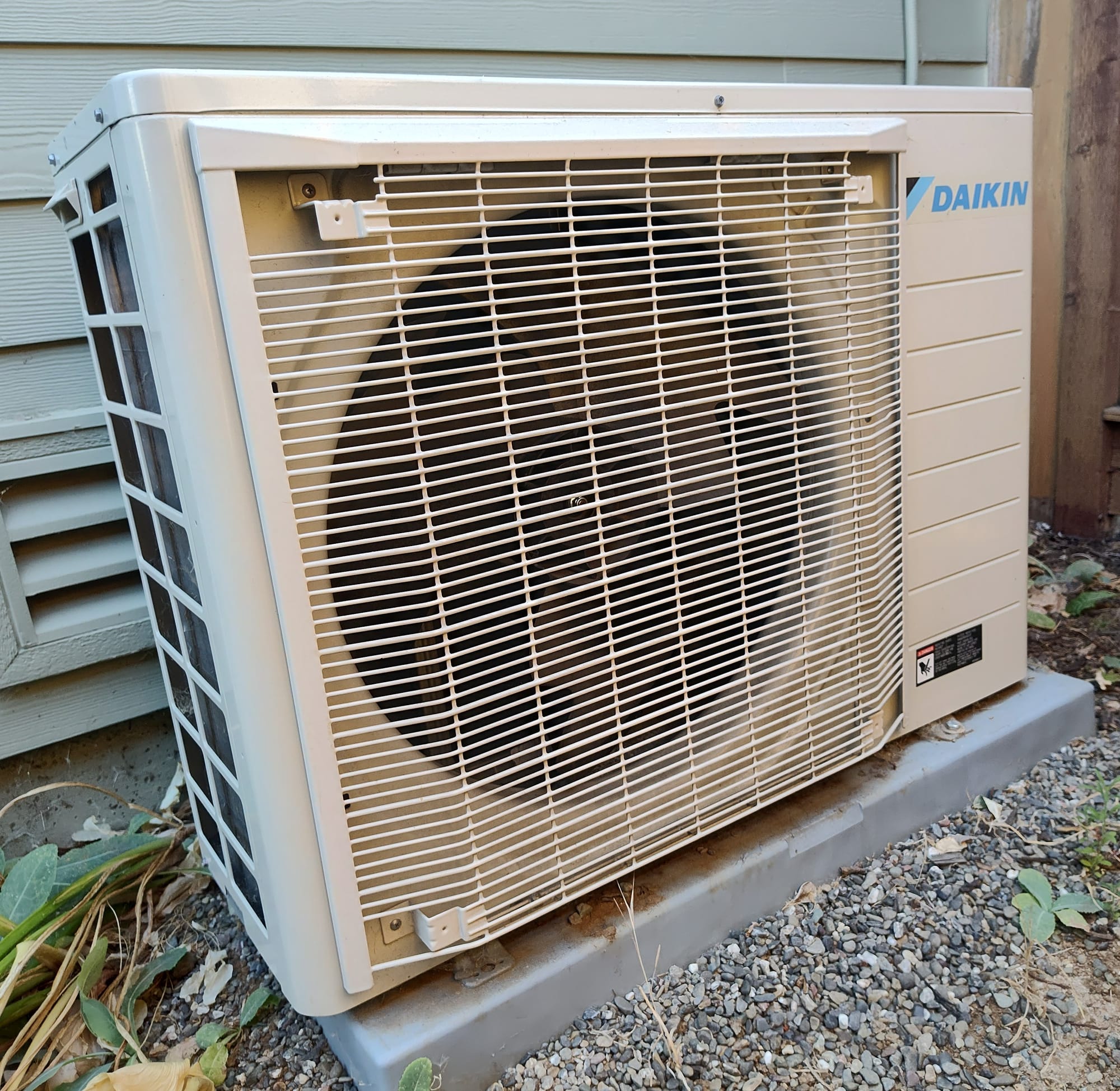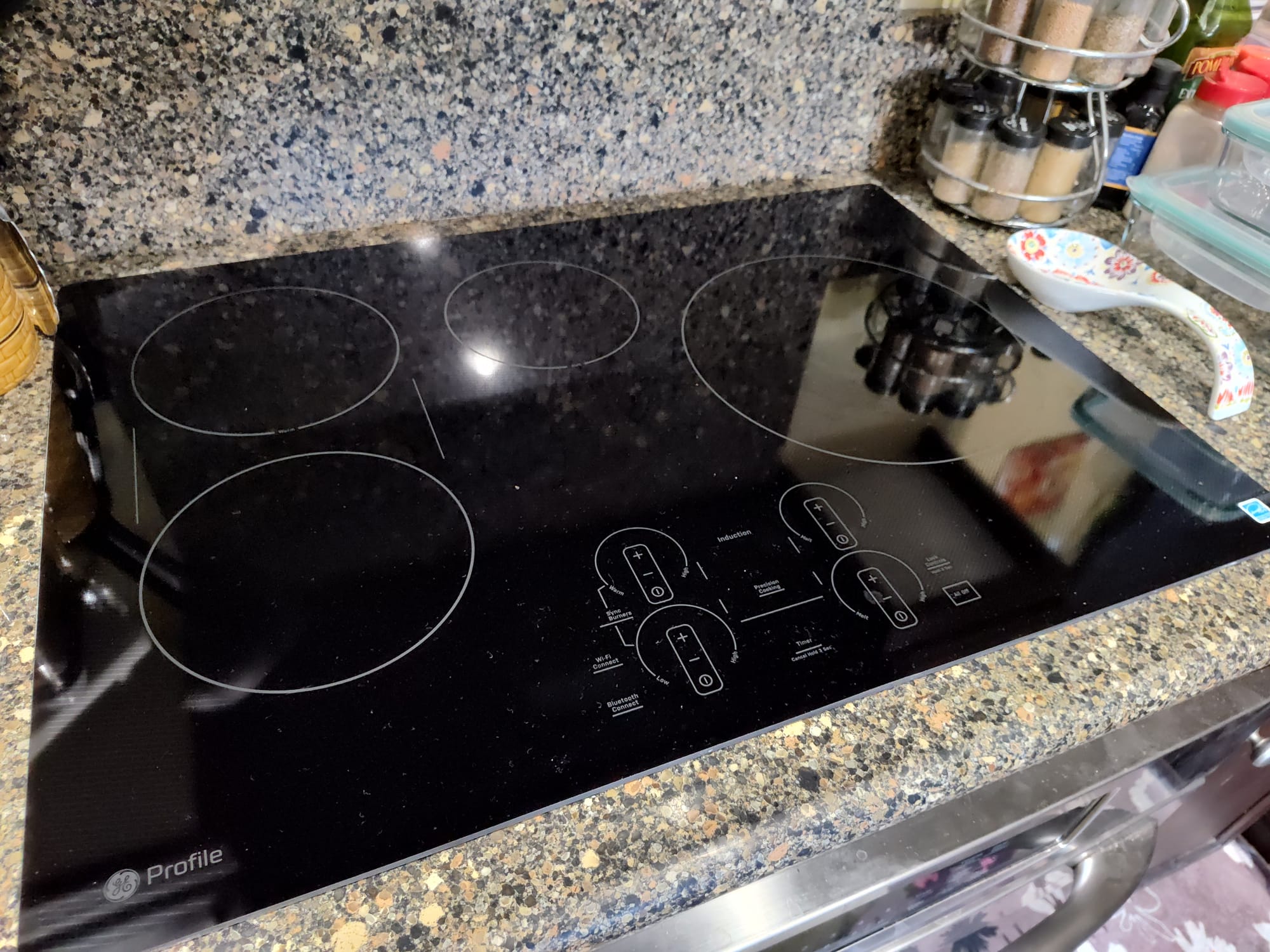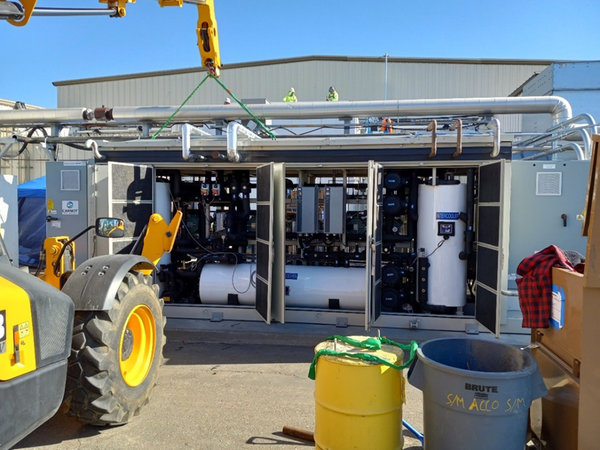I now live in an all-electric home. You can, too.
With the installation of an induction cooktop, I was able to shut off the fossil gas supplied to my 17-year-old home in Northern California. Here's how I did it.

Quitting Carbon is a 100% subscriber-funded publication. To support my work, please consider becoming a paid subscriber or making a one-time donation.
Each week in this newsletter, I write about the projects, people, and policies advancing the energy transition. I wouldn't be publishing a newsletter worthy of the name "Quitting Carbon" if I wasn't willing to take action to get off fossil fuels and reduce emissions in my life and in my own home, too.
So, I am thrilled to share that as of June 24, when a technician from Pacific Gas and Electric (PG&E) shut off the fossil gas supply to my home, I now live in an all-electric home.
As anyone who has retrofitted an existing home to get off fossil fuels will tell you, the process is never easy. Here's how I did it.
The scope of the challenge
My home was built in late 2007 in Concord, California. My wife and I moved into the home in March 2008.
Concord's proximity to San Francisco Bay means that the weather is beautiful much of the year, helping to keep energy consumption in check. The home was built as part of an infill project and is just a 10-minute walk from a Bay Area Rapid Transit station as well as Concord's downtown.
And because of California's stringent building energy code, Title 24, the home was more energy efficient than new homes built just about anywhere else in the U.S. at the time, with double-paned windows, a tight building envelope, and ample insulation in the exterior walls and attic. Every home in the community also came equipped with a rooftop solar photovoltaic (PV) system – which was quite novel at the time.
So far, so good.
But the developer also outfitted my home, and all the others in the development, with gas-fired furnaces, water heaters, and kitchen cooktops. Despite California's deserved reputation as a climate champion, gas still dominates for end uses like residential space heating, water heating, and cooking in the state.
I knew it could take years, but I was determined to eventually stop burning fossil fuels in my home.
The beginning of the transition
In April 2022, I noticed a red light I hadn't seen before coming from the inverter for the PV system that came installed with the house. After a long, frustrating troubleshooting process with representatives from SunPower on the phone and in person in my garage, the problem was diagnosed: the inverter had failed.
The power generated by the rooftop PV system was no longer being fed to the home, and on to the grid at midday peaks. That was one early, key lesson learned (see more lessons learned – and advice – in the box below).
Most homeowners don't know this (including my neighbors, for whom the same inverter failure is now occurring at their homes) but if your rooftop solar system has a central inverter, you have a single point of failure, and the inverter will almost certainly fail before the PV modules on your roof do. I was told you can expect about 15 years of life from a central inverter, which was almost precisely how long my home's inverter lasted.
Our first critical decision point had been reached. It was impossible to replace the failed inverter – it wasn't being made any longer. The solar modules atop the house, a roof-integrated SunTile array manufactured by PowerLight and SunPower, and made to look like clay roofing tiles (you can see them in the lead photo at the top of this story), were likewise no longer being manufactured. Plus, the SunTile systems installed as a standard feature throughout the development had been under-powered at just 2.5 kilowatts (kW).
We decided to invest in a new system, and to go bigger.
Powering my all-electric home
I knew we'd need to install a larger PV system to offset the increased power demand that would come with shifting major appliances from gas to electricity.
Several people I trusted recommended a highly-rated local solar installer, *Ambrose Solar. The company has been installing solar on rooftops since 2017 and is based just 45 minutes from my home. Another selling point for me was that Ambrose planned to use quality components, including high-efficiency SunPower modules and Enphase microinverters attached to each solar panel, backed by a 25-year warranty. We installed 10 425-watt M Series SunPower panels for a system rated at 4.25 kWp (DC).
The original plan was to install all 10 panels in one array, on the same footprint as the existing SunTile system. But one of the Ambrose engineers saved us time and money by proposing a creative work-around before the installation. Rather than remove the existing SunTile PV system, which would have required us to pay to install new shingles on that section of the roof, Ambrose suggested to split the 10 panels into two arrays, and simply keep the SunTile system in place (you can see the remnant SunTile system, as well as four panels from the new mounted PV system, in the lead photo at the top of the story).
We secured the interconnection go-ahead from PG&E and turned on the new PV system in July 2022. With the more powerful PV system in place, we were ready for the next phase of our project.
Picking a contractor and scope of work
Not long after our new PV system came online, Democrats in Congress and the Biden administration accelerated the timeline for our home electrification project by passing the Inflation Reduction Act (IRA) in August 2022. The IRA not only made the federal tax credit for rooftop solar installations more generous (worth 30% of the cost of the system, up from 26% previously), it also included a tax credit worth up to $2,000 to cover the cost of installing heat pumps.
We had been saving for our project, but the more lucrative federal incentives made it a much easier decision to act sooner.
In August 2023, I reached out to a contractor I knew from my reporting, Larry Waters at Electrify My Home (read more about Waters and Electrify My Home below). I had mentioned to Waters that I was ready to move ahead with my home retrofit – there were the new IRA incentives and I was increasingly worried that our gas-fired tank water heater, which was original to the home, wasn't going to last much longer.
"You’re doing this at the perfect time – unless your water heater is leaking," he had replied. "The big rebates are kicking in on these end of October."
I completed an online form and uploaded photos of my water heater and electrical panel at Electrify My Home's website. A few days later, Waters and I spoke via Zoom for a virtual assessment and he prepared a preliminary estimate for our project.
The next month, he did an on-site assessment to take measurements and inspect the existing equipment in my home. We agreed on a revised scope of work based on that assessment and my project was added to Electrify My Home's calendar.
The final scope of work included line items with descriptions of and pricing for all the equipment to be installed as well as the local, state, and federal incentives available to bring down the total cost. Some of the incentives were instant rebates, which were reflected in the final quote, while others such as the federal heat pump tax credit, we would apply for when we filed our annual federal tax return.
Three months later, an Electrify My Home crew arrived at my home and got to work.
Out with the old, in with the new
Because of the preparation ahead of time, once the crew arrived, the work proceeded quickly. By the end of the first day, the old gas-fired tank water heater was gone, replaced by a 66-gallon tank State electric heat pump water heater (model HPSX-66-DHPT 200). The new water heater rests atop the same pedestal in the garage where the old gas-fired water heater had been.
Next to our side yard patio, the crew removed the air conditioner and replaced it with a Daikin FIT air-source heat pump (model DZ6VSA3010AB). In the attic, the crew removed the gas-fired furnace and installed a Daikin air-handling unit (model DV36FECC14) in its place.
We chose a ducted heat pump, which enabled us to re-use much of the existing ductwork from the original central HVAC system. The crew had to modify some of the ductwork in the attic, doing so, as the scope of work put it, "to modify for enhanced performance with a heat pump, which functions differently than a furnace." This work included "dampers, sealing, and adjustments to maximize airflow and reduce static pressure."
Also in the attic, the crew added blow-in insulation to reach an R-value of R50. They buried the ductwork under insulation, wherever possible, to reduce thermal losses. And they sealed any gaps or penetrations (e.g., wall caps, wire holes, can lights and fans, and interstitial cavities).
Electricians were busy on the project, too. They installed a circuit from the electrical panel to the heat pump water heater along with a box with a fused disconnect. And they ran an electrical conduit from the kitchen to the electrical panel to enable the installation of an induction cooktop.
This last task was quite complicated. It involved running the conduit through and then along an exterior wall, routing it into the garage and then running it above the garage door and on to the electrical panel. The original electric oven and gas cooktop in our kitchen had been installed flush with a wall that faces our neighbor. Because part of that exterior wall also serves as the border of the neighbor's patio, we had to ask our (very patient and accommodating!) neighbor for permission to have an electrician enter their patio to install the electrical conduit.
This step was critical, however, because it was the last upgrade required to fully electrify our home.




From upper left: The six-panel solar PV array above the garage and master bedroom; the heat pump water heater in the garage; the air-source heat pump on the side patio; and the induction cooktop in the kitchen. Credit: Justin Gerdes.
Advice and lessons learned
Search for a specialist electrification contractor: I cannot stress this one enough. When I was ready to start the retrofit project in my home, I knew exactly who I was going to contact: Larry Waters. Seven years ago, Waters had helped my friend Justin Guay fully electrify his former home in the San Francisco Bay Area. I profiled Justin's project for Greentech Media.
Waters went on to launch a company called Electrify My Home that specializes in all-electric retrofits, serving much of the greater San Francisco Bay Area. Most importantly, I was confident Waters' experienced crew of certified technicians would install my new equipment correctly.
The Contractor Finder at the Building Decarbonization Coalition's The Switch Is On website can help you locate a licensed contractor near you that is "specially trained in energy efficiency and electric technologies."
Be proactive and replace your water heater on your terms: Do yourself a favor and make a plan to replace your aging water heater. More than 90% of water heater swap-outs are emergency replacements. You don't want to risk being without hot water for multiple days if your water heater fails.
Some local jurisdictions have launched loaner programs that give homeowners critical time to select a water heater that is better for the planet, as I reported here at Quitting Carbon last November. If your water heater is reaching the end of its expected life (10-15 years), get ahead of a potential failure and install a new unit that works for you and does not burn fossil gas.
Be prepared for disruption: If you replace one or more space- or water-heating appliances, you will very likely have multiple technicians working in your home for two or more days. If you work from home, prepare to have crew members coming and going from your garage and climbing the ladder to and from the attic, making noise that could disrupt your Zoom calls or presentations. We boarded our dog Coco, who doesn't respond well to strangers in the house, during our project. You might want to have portable heaters or fans at the ready, too, depending on the season, if your work is scheduled over multiple days.
If you've been debating a home electrification project, act now: If you've thought about installing a new air-source heat pump or heat pump water heater, adding attic insulation or replacing your gas-fired stove or cooktop with induction models, now is the time to act. The Republican budget reconciliation bill signed by Donald Trump on July 4 eliminates the federal tax incentives for rooftop solar installations (Residential Clean Energy Credit, 25D) and residential energy efficiency and electrification upgrades (Energy Efficient Home Improvement Credit, 25C) at the end of this year. Canary Media's Alison F. Takemura recently published a great overview of the soon-to-expire federal incentives that could help to defray the cost of your project.
Shutting off the gas
By the time the Electrify My Home crew completed our project, which was just before Christmas 2023, we were living in an all-electric-ready home.
The only gas-fired appliance remaining was the kitchen cooktop. Because I was so determined to stop burning an open flame in the house, we stopped using the gas cooktop once the retrofit project was completed – so we have been gas-free since December 2023.
We were somewhat limited in our cooking during this time, without a full set of cooktop burners. But we got by with the electric oven, microwave, a Duxtop portable induction cooktop burner (model 9600LS/BT-200DZ), and a Ninja multicooker (model Foodi PossibleCooker PRO).
But because Electrify My Home had installed the electrical conduit to the kitchen, a 240-volt plug was waiting for a new induction cooktop – whenever we were ready.
By spring of this year, we were ready to take the final step and replace the gas cooktop. The model I eventually selected, a 30" GE Profile built-in, touch control induction cooktop (model PHP9030DTBB), was a drop-in replacement for our existing GE Profile gas cooktop.
We were now so close. The last gas-burning appliance had been replaced. All that was left was to plug it in. The technician from a local appliance retailer plugged in the new induction cooktop ... and no lights came on. It would not turn on.
We went into the garage, and walked up to the electric conduit feeding the induction cooktop. The technician pulled out a voltage tester – the line was not live.
I contacted Electrify My Home. The operations lead got back to me right away. In the notes for our project, the electrician who had installed the electrical conduit and 240-volt plug for the induction cooktop wrote that as a precaution he had not wanted to activate the line before a new cooktop was installed.
One of the company's electricians came to the house the next afternoon. Within a half-hour, he had activated the circuit for the induction cooktop at our electrical panel. He came into the kitchen and we tested the burners – the power was on, and we were ready to cook.
The next day, I called PG&E and asked them to stop billing us for gas service, and the representative scheduled an appointment for gas shut off at our home. Less than two weeks later, a technician arrived to turn off the gas.
At long last, we were officially living in a gas-free home.

All-electric homes are faster and cheaper to build than mixed-fuel homes. But we don't have time to wait for the entire housing stock to turn over and be replaced with new all-electric construction.
If we are to have any chance of achieving net-zero emissions by mid-century, homeowners must retrofit millions of existing homes in California, and tens of millions nationwide, to get rid of gas-burning appliances and replace them with zero-emission electric heat pumps and induction cooktops.
I hope that reading about my experience makes every retrofit to come just a little bit easier. We have no time to lose.
*Note: I was not paid to mention or to recommend any of the manufacturers or contractors included in this story.




